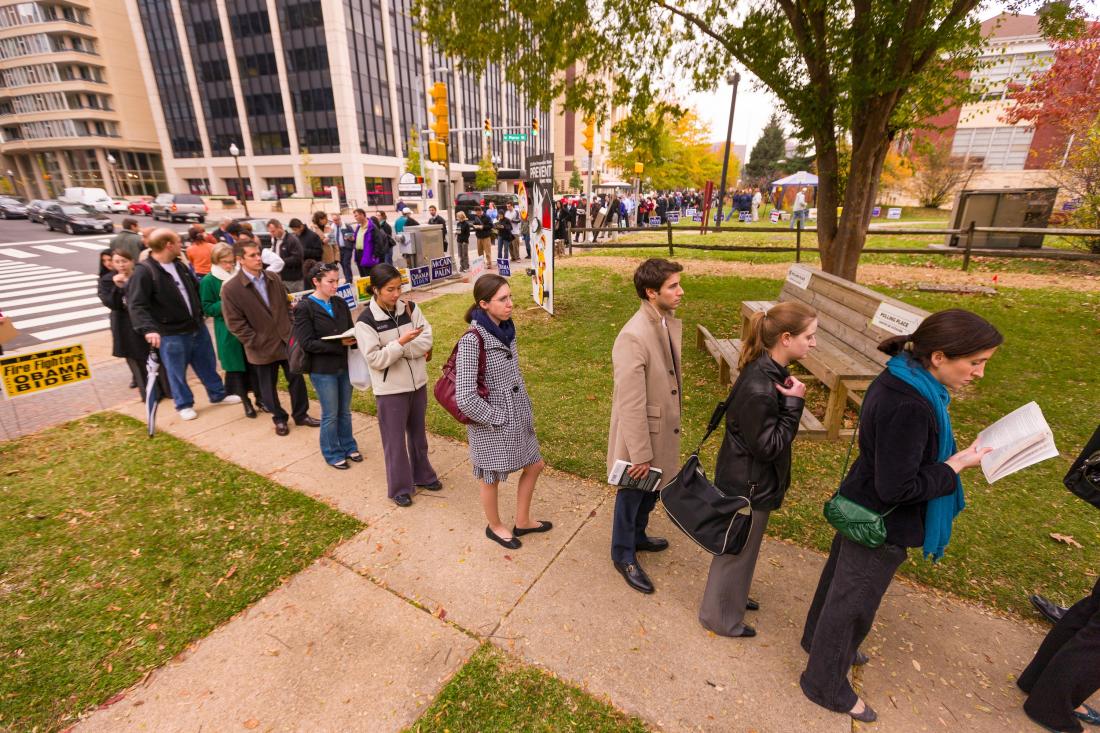The Effect of Prepaid Postage on Voter Turnout in the United States
- Voters
- Electoral participation
- Voter Behavior
- Nudges and reminders
The effect of increasing the convenience of voting on turnout remains uncertain in the U.S. Researchers randomly provided postage-paid envelopes to a subset of permanent absentee voters in San Mateo County, California in order to evaluate its impact on voter turnout. The provision of prepaid postage resulted in no net change in voter turnout because it simultaneously decreased the number of votes cast by mail and increased the number of votes cast in person. Researchers inferred that confusion caused by prepaid postage yielded this surprising result.
Policy issue
A number of theories attempt to predict the influence of voting costs on turnout. Researchers have considered both direct costs such as poll taxes and indirect costs such as the inconvenience of voter registration. While poll taxes and substantial barriers to voting clearly diminish voter turnout, the effect of enhanced convenience for voting is less certain. This study evaluated the impact of providing postage-paid envelopes to permanent absentee voters on voter turnout. On the one hand, prepaid postage eliminates the cost of a postage stamp for voters. On the other, the change in routine may add a transaction cost for voters to cast their ballots in a way they are less accustomed to. This study differs from past research in two respects. First, previous work relied substantially on observational data rather than data collected from a randomized evaluation. Second, this study suggests that transaction costs of changes in voting procedure may offset other reductions in transaction costs.
Context of the evaluation
Several states allow voters to join a permanent absentee voting list. Once voters opt in, they automatically receive absentee ballots for all future elections. Researchers studied a sample of 148,840 permanent absentee voters in San Mateo County, California leading up to the November 2, 2010 general election. Permanent absentee voters receive absentee ballots, including an insert with voting instructions, by mail. Typically, the ballots require postage to be returned. The election included gubernatorial and senatorial contests as well as measures related to global warming and marijuana legalization.

Details of the intervention
Of the 148,840 permanent absentee voters involved in the study, 10,000 were randomly assigned to receive postage-paid envelopes along with their absentee ballots. The remaining voters formed the control group and received absentee ballots which required postage as usual. All mailings contained an insert with voting instructions. The front side of the insert was identical for both the treatment and control groups. However, the insert sent to the treatment group indicated that postage was not required to return the ballot, while the insert sent to the control group indicated that postage was required. Ballot mailings were carried out by the San Mateo County Registrar' s office.
Results and policy lessons
The intervention produced no significant effect on voter turnout. However, the treatment did change voter behavior. Postage-paid envelopes resulted in two equal and opposite effects, which resulted in no net change in voter turnout. Counterintuitively, voters who received postage-paid envelopes were 1.6 percentage points (2.3 percent) less likely to vote by mail (68.6 percent versus 70.2 percent of voters in the control group). Voters who received postage-paid envelopes were also 1.4 percentage points (25 percent) more likely to vote in person (6.2 percent versus 4.8 percent of voters in the control group).
Researchers identified two potential mechanisms by which prepaid postage could produce such a result: voters accustomed to using a stamp for their absentee ballots may have been confused by the change in routine and the voting instructions may have been unclear. Voters with more experience voting by mail were more likely to vote in person upon receiving ballots with prepaid postage, compared to voters with less experience voting by mail, suggesting that the change in routine did indeed confuse voters. Several interviews conducted with voters following the intervention indicated that voters were confused about the meaning of the line "postmarks are not accepted," which was meant to indicate that the deadline for absentee ballots was a received-by deadline rather than a mail-by deadline. Researchers concluded that election administrators and government officials should be careful to design voting materials and instructions clearly and at a level that can be understood by voters. Researchers also warn that policy changes that reduce direct costs of voting should be used cautiously. The added transaction costs of changes in routine can be substantial enough to counteract any increases in voter turnout caused by lower direct costs.